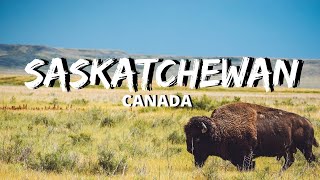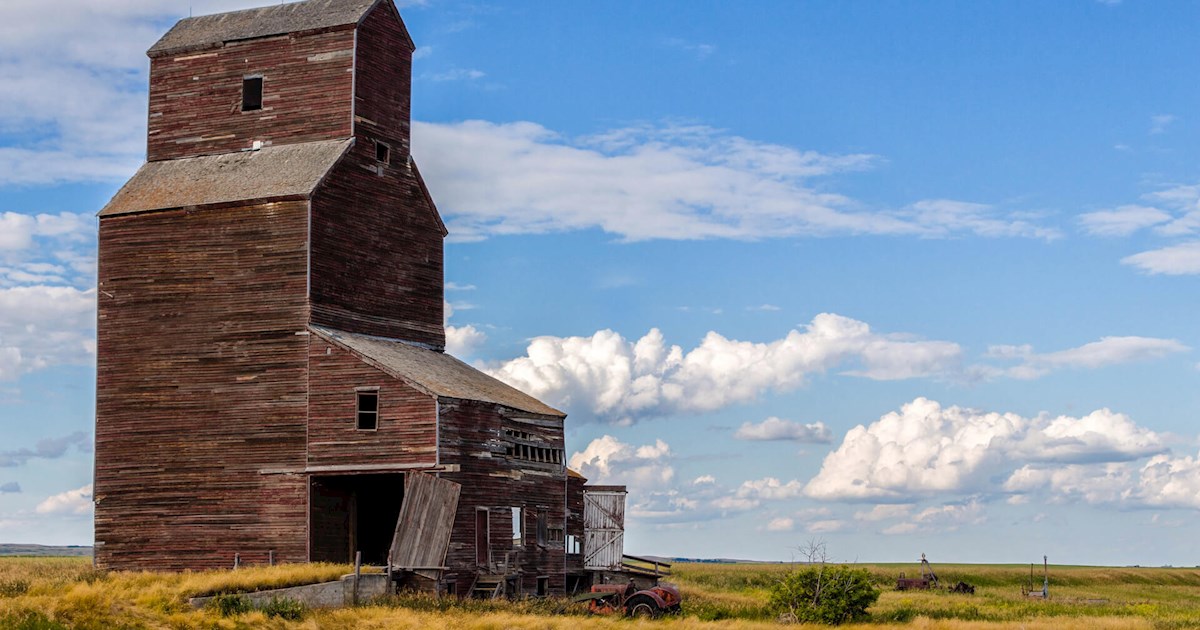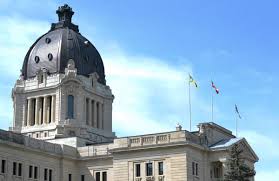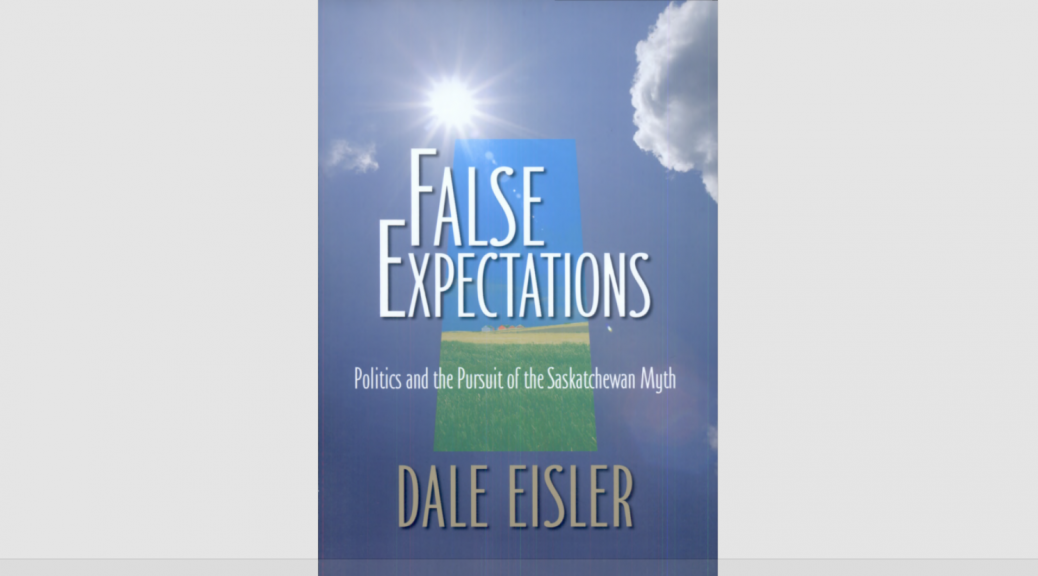
Introduction & Chapter 1: The Saskatchewan Myth
Dale Eisler discusses private and public choice in political economy and aims to demonstrate that Saskatchewan’s self-image diverges from other provinces perception of the province. First, Saskatchewan was created for the consumption of the Commonwealth. Second, Saskatchewan’s self-image struggles with the duality of external and internal images as reality never meets expectations in politics or economy. The Saskatchewan Myth is a politically re-enforced faith that is embedded in the identity of the polity; it the dreamy aspirations for future prosperity and a psychic strength that continues to bring hope as rural fortunes prove dubious. The myth calls for overly optimistic economic forecasts, willful exaggeration and unrealistic ignorance of geographic and revenue realities. For immigrants, it represented hopes and dreams in the New World and built-up a romance of Saskatchewan as a special place with special people. The myth is real in the minds of the citizens where we believe the bonds of community are stronger than anyother polity in Confederation. Are Saskatchewan citizens narrow-minded and too preoccupied with getting through the day to realize the false visions of grandure at the root of our provincial identity? Why is Saskatchewan literature focused on the “imagined communities’? Why is the province the second largest exporter of human resource in Canada? The truth is that Saskatchewan was the promise-land that never was realized. Historically, the province played a significant role in the economic non-partisan project under Laurier. The myth was manufactured before conception in Britain to expand the Canadian West. There was fear of American expansionism and in response to the Crow Law (1846) Canada was left with the drive for national policy. During the National Policy era and beyond, wheat was an undisputed lynchpin to the Canadian economy. However, we are under valued in confederacy then and currently. Eisler will show through political history and economic study that the 2nd century was less promising then the first…
DISCLAIMER: Professor Nerdster is intellectually free and as such, does not need to agree with Dale Eisler’s views to explore them. It is better to get these views out in the open and understand them, rather than not address the ideas of this influential scholar.

![]() Chapter 2: The National Policy
Chapter 2: The National Policy
DISCLAIMER: Professor Nerdster is intellectually free and as such, does not need to agree with Dale Eisler’s views to explore them. It is better to get these views out in the open and understand them, rather than not address the ideas of this influential scholar.

Chapter 3: Misguided Economy
Saskatchewan became a great success and was crucial for a viable and secure national economy. The West would help create the wealth in Central Canada. Money was essentially funneled to Central Canada as a direct consequence of economic policy. Critical for Canada’s economic dimensions is the export of a major staple to sell on the world market, and a rapidly growing farm population – needing all the necessities of life. Central Canadian Tariffs were to decline over time, as promised by Laurier but this did not take place as Canada could not compete against the United States economic growth. Farmers were paying 30% more for Central Canadian tractors with the tariffs than they would be for tractors from Minnesota. This ‘Branch-Plant’ economy harmed farmers and economic growth in Saskatchewan. The economic environment was designed specifically against Western parochial interests. There was a false sense of security in the National Policy and tariffs for industry, railway development in Western settlement did not serve Saskatchewan well. Despite this, the myth becomes a reality, in which there is still hope for better days ahead.
DISCLAIMER: Professor Nerdster is intellectually free and as such, does not need to agree with Dale Eisler’s views to explore them. It is better to get these views out in the open and understand them, rather than not address the ideas of this influential scholar.

Chapter 4: The Illusions of Growth
In the span of only 20 years, Saskatchewan grew to be the third most populous region in Canada. While there was ethnic tensions between aboriginal people and settlers, the wheat production was poised to place Saskatchewan on the threshold of economic greatness in Canada. Haultain called for provincial status in the west in 1904 and called an election to strengthen his mandate for self-determination in the west. Laurier gave in 1905 with the caveat that the west be split up to form competitive cultures. In 1930 our national resources were released to the province under Section 93. There was a problem in Saskatchewan of backward children in rural schools who were uneducated by unqualified teachers. The cost of rural Saskatchewan also hindered grown exponentially.
DISCLAIMER: Professor Nerdster is intellectually free and as such, does not need to agree with Dale Eisler’s views to explore them. It is better to get these views out in the open and understand them, rather than not address the ideas of this influential scholar.

Chapter 5: Reality and Politics
At the zenith of Saskatchewan prowess, 57% of homesteads failed. There was great conviction from people who did not control their economic destiny. They were not fatalistic but imaginative. When prices drop due to agricultural laws of economics, farmers instinctively produce more wheat. The province’s economy was embedded in wheat. Manitoba Grain Act of 1900 held the CPR accountable for gouging farmers and the Saskatchewan Grain Growers’ Association (SGGA) represented farmers in an non-partisan fashion. The SGGA did have influence on the Saskatchewan Liberal Party. The fall of wheat prices in 1921 cultivated more Farmer Unions and a communitarian spirit in Saskatchewan. The Liberal Premier Martin began to distance himself from the Liberal Party of Canada. July 1, 1927, marked the 60th anniversary of Confederation, while the theme was ‘unity in diversity,” the Ku Klux Klan had their ‘konclave’ in Moose Jaw, the largest in Canadian history. Meanwhile the economic decline in relative terms to the rest of Canada was underway as Ontario, Quebec and BC surpassed the growth of the wheat economy.
DISCLAIMER: Professor Nerdster is intellectually free and as such, does not need to agree with Dale Eisler’s views to explore them. It is better to get these views out in the open and understand them, rather than not address the ideas of this influential scholar.

Chapter 6: The Changing Myth
The people were never able to let go of that hope. There was a shift in myth towards institutional reform and economic control. Depression folklore, being bound to the Wheat. The Great Depression’s economic impact was devasting. Saskatchewan Loans Act; borrowing by cabinet in the depression was high. During the Great Depression farming doesn’t provide economic growth while the high cost of rural farms was the economic backbone. What is there to do about the wheat economy?
DISCLAIMER: Professor Nerdster is intellectually free and as such, does not need to agree with Dale Eisler’s views to explore them. It is better to get these views out in the open and understand them, rather than not address the ideas of this influential scholar.

Chapter 7: Keeping Hope Alive
The founding myth of Saskatchewan forged by the National Policy’s mixture of politics, economic nationalism and the private commercial aspirations of a central Canadian business class had dissolved in the pain of the Great Depression. There was a call to taking control of their destiny as it was denied by outward forces. Radical socialism begins to take root as capitalism is to blame. The Regina Manifesto in 1933 calls for a major economic reassessment. The Progressive grow in 1921 thanks to anti-tarriff and anti-exploitation sentiment. The Co-operative Commonwealth Federation (CCF) abhorred the class community and external exploitation in Saskatchewan. The CCF was a complex group of leftist academics and labour union representatives. There was substantial fear of Jimmy Gardiner and the Liberal Party. It is evident that Tommy Douglas re-invigorated the myth as a CCF moderate.
DISCLAIMER: Professor Nerdster is intellectually free and as such, does not need to agree with Dale Eisler’s views to explore them. It is better to get these views out in the open and understand them, rather than not address the ideas of this influential scholar.

Chapter 8: Suffering and Redemption
King deceived Saskatchewan farmers by breaking the conscription clause against sending their sons to war. Economic spiral continues during the Dirty Thirties, as poverty is visible to the wider community. Tommy Douglas envisions a new expansive state and road to the promise land. He advocated the Social Gospel: utilizing institutions of the state to accomplish Christian deeds of mercy and charity. Keynesism arrives and State planning expands during the Second World War across Canada, particularly in Saskatchewan.
DISCLAIMER: Professor Nerdster is intellectually free and as such, does not need to agree with Dale Eisler’s views to explore them. It is better to get these views out in the open and understand them, rather than not address the ideas of this influential scholar.

Chapter 9: The New Saskatchewan Myth
CCF would push politics over reality by offering simplistic solutions to complex problems of state. Douglas used politics to raise the ethic of a higher moral level, one that spoke to the Christian morality that links the welfare of people to each other. Saskatchewan became a provincial laboratory of national worth. Saskatchewan finds potash and oil reserves and socialist come from all over the world to take part in the first Socialist government in North America. The bureaucrats struggled with the widely dispersed demographic reality of the province. The idea that government, through economic planning and social ownership, could unlock the potential of Saskatchewan that had been denied to its people, was central to CCF philosophy and the early days of the Douglas government. Upon gaining power, Douglas was asked to pay a cash payment of 16 million from the Federal Liberals over the seed debt and additionals. Farmers security legislation was presented by Fines in 1945. Joe Phelps got the government involved in a box factory, a brick factory which were economically unsustainable. Douglas called Sigerist to study health-care in Saskatchewan. The British Socialist George Cadbury helped ensure accountability and counter-racted ill-fated shoe factories and other naïve boondoggles that didn’t take into account the tarrif. Cadbury also helped with a new bureaucratic process and innovation. There arose a new managerial class. Whether the social ownership and central planning by government was successful in Saskatchewan goes to the heart of the province’s continuing political debate.
DISCLAIMER: Professor Nerdster is intellectually free and as such, does not need to agree with Dale Eisler’s views to explore them. It is better to get these views out in the open and understand them, rather than not address the ideas of this influential scholar.

Chapter 10: The Bittersweet Years
The province must accept the limited economic propperity as the CCF become more urban based in 1948. Of all of Douglas’ accomplishments, he told Romanow privately that electrification was it (1954). In 1950s and 60s agricultural dependence decreases. Governments always predict strong population growth in Saskatchewan. Douglas believed in individual rights for aboriginals and equality through integration to help the Aboriginal underclass.
DISCLAIMER: Professor Nerdster is intellectually free and as such, does not need to agree with Dale Eisler’s views to explore them. It is better to get these views out in the open and understand them, rather than not address the ideas of this influential scholar.

Chapter 11: The Myth and Medicare
The medicare myth brought to bare the question of how could they financially sustain it? The idea of medicare came from Mat Anderson the mayor of Lloydminster in 1915 orignally. The consequence of medicare was Keep Our Doctors (KOD) movement and the doctor strike of 1962 which was finally resolved and universal healthcare was realized. The Liberals conceded ground on prepaid medical care.
DISCLAIMER: Professor Nerdster is intellectually free and as such, does not need to agree with Dale Eisler’s views to explore them. It is better to get these views out in the open and understand them, rather than not address the ideas of this influential scholar.

Chapter 12: The Potash Myth
Ross Thatcher was first to recognize Aboriginal rights in 1960s. Thatcher and Douglas dueled over the impediments of public versus private ownership. What is clear, however, is that neither ideology can produce exceptional results. Thatcher recast the political debate in the manner of economic development in 1964 and gained power. Thatcher promoted the adoption of aboriginals into non-aboriginal homes. The promise of wealth through pot ash was not fully realized and the myth continues.
DISCLAIMER: Professor Nerdster is intellectually free and as such, does not need to agree with Dale Eisler’s views to explore them. It is better to get these views out in the open and understand them, rather than not address the ideas of this influential scholar.

Chapter 13: Big Ideas, Big Government, Big Debt
The remarkable devotion to government intervention as a solution to virtually all the perceived problems and challenges facing Saskatchewan was beginning to seem remarkable. The New Deal for People wins the 1971 election and Blakeney takes the reigns of provincial office. Thatcher’s legacy was that of unfulfilled promises and established the continued theme that Saskatchewan was failing to meet its economic potential. Blakeney continues the NDP tradition of expanding state intervention and finalizes the Crown family at 27 corporations. Grant Devine’s ‘open government’ solutions proved ineffectual as inflation expanded and international prices dropped for staple goods. The provinces population remained at around 990,000 for over 75 years from 1930-2005.
DISCLAIMER: Professor Nerdster is intellectually free and as such, does not need to agree with Dale Eisler’s views to explore them. It is better to get these views out in the open and understand them, rather than not address the ideas of this influential scholar.

Chapter 14: The Reckoning
Eisler concludes by outlining the two most pressing issues in Saskatchewan. First, the sustainability of rural society and second, the aboriginal question. Romanow was forced to take a measures of fiscal austerity to prevent the province from going bankrupt. How can rural Saskatchewan thrive in the 21st century? There is unspoken racism in Saskatchewan but who is to blame? Aboriginal education is appalling and they have a low employment rates coupled with high birth rates. We could call this phenomenon: the Edubirth crisis. Kinda like Stagflation? Silly, I know. Eisler gives the statistics on the aboriginal file and suggests more autonomy on tax policy. Richards argues for federal transfers for on & off reserves.
DISCLAIMER: Professor Nerdster is intellectually free and as such, does not need to agree with Dale Eisler’s views to explore them. It is better to get these views out in the open and understand them, rather than not address the ideas of this influential scholar.

Chapter 15 Conclusion
Get external voices to believe the myth to give a happy ending. Perhaps we can shape the myth? If we pursue the myth then perhaps that is good enough. We can accept who we are in Saskatchewan and by chasing after our ambitions for Saskatchewan somehow make perception a reality. We need to reach a national audience to attract new people to Saskatchewan. How do the aboriginals fit into the Myth? How do we cultivate the aboriginal myth? We need strong community commitment to an aboriginal solution. In the end, the Myth is somehow a force to be reckoned with. Has the myth been positive or negative? Who knows. Eisler says “let’s end the book gently, eh?”, why can’t we be satisfied with reality and accept that growth is not achievable? The Myth by definition is a force for progress and espouses believing in and working towards a goal which is what all communities need to animate the public discourse they share. The final analysis is a vaguely convoluted one, indeed.
DISCLAIMER: Professor Nerdster is intellectually free and as such, does not need to agree with Dale Eisler’s views to explore them. It is better to get these views out in the open and understand them, rather than not address the ideas of this influential scholar.

